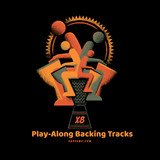Udu Drum: History And Playing Instruction
Percussion is the most vital element of African music. In African cultures, the beat of a drum is used to relay a message in what many understand as drum languages, or talking drums. Different African cultures use ordinary household items as instruments which developed into a wide variety of percussion instruments that we know today.
One of these instruments is the Udu. The udu drum originated from the Igbo people of Nigeria. Unlike other percussion instruments, the udu drum was invented and developed by the women of the Igbo people from clay pots. In fact, Udu means pot in Igbo. These clay pots are used to carry and store water from the river to their homes. Although the udu looks like an exotic instrument, the udu is a big part of the Igbo's way of life. You will find a lot of these pots littered in their homes. The udu is also used to store grain and other cultivated foods. The udu is a good nesting place for bee colonies, which then becomes a source of honey for the Igbo farmers.The function of udu as a household item and as a percussion instrument is not a coincidence especially in traditional cultures. The udu was used for women's ceremonies and rites. Eventually, the udu drum evolved into a percussion instrument in Christian churches in Africa and around the world. Udu drum is also used in reggae bands, African pop music, percussion musicals, and acoustic performances.
The udu drum has a unique property that allows it to produce a wide range of different sounds. A typical udu drum has a small hole to gather the air that carries the sound. The udu drum is used to play bass beats with vibrating tones. These beats are used to guide a band or anchor the rhythm of the song and move the performance forward. The udu drum can be played by tapping one's fingers on the sides, and moving hands over and away from the hole much like a flute. The variation of taps and hole adjustments produces a wide array of different sounds.
The side hole is the most important part of the udu drum. It is also the part that differentiates the udu drum from other African percussion instruments. You can control the deep bass tone of the udu drum by covering the hole in a rhythmic motion. Covering the hole and then immediately removing your hand produces an effect that causes the sound to sweep suddenly from a low pitch to a higher pitch. You can also temper the rise in pitch by gradually uncovering the hole as you tap the other side with your fingers. The udu drum has a range of one octave. Experienced udu drummers can make use of this range for a better percussion arrangement, which is something that is not possible with other percussion instruments.
Another essential element in playing the udu drum is the method of tapping. Harder taps and slaps produce louder sounds, while slow finger taps produce the fundamental bass sounds. You can mix the taps together along with the right hole adjustments to produce a dramatic percussion effect.
Playing the udu drum requires a high degree of skill and dexterity. The full use of fingers is necessary to bring the right sound. Playing the udu drum is not about volume or power. Instead, the drummer should capture the right tempo and combination to produce a pleasant sound. The light sound of a udu drum is useful in an ensemble or in musical arrangements that need a light percussion instrument and can anchor the music without overpowering it.
Recent Posts
-
X8 Drums Play-Along Backing Tracks
The new X8 Play-Along Series is being produced for our musician friends wanting a fresh way to work …9th Feb 2025 -
What is the Best Size Djembe for Beginners?
If you're new to the world of percussion and interested in learning the djembe, you're in for a t …16th Jul 2024 -
The Benefits of Becoming a Drumming Teacher: Transforming Passion into Profession
Why become a drumming teacher? Becoming a drumming teacher is an excellent way to share your pas …22nd May 2024



